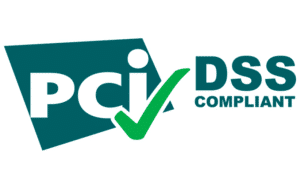Does your finance department already work agile? If not, then it’s high time. Because this allows you to help your customers quicker and better. Moreover, this approach radically changes the role of your financial professionals: from simply being a watchdog to becoming a driving force in the company.
Agile working breaks down complex and/or wide-ranging projects into manageable tasks, on which teams work together, task by task.
More and more organizations worldwide are opting for this agile way of working together, which has crossed over from the tech sector.
Why work agile?
The short-cycle, agile approach helps teams plan better, work together more smoothly and switch gears much faster.
This is why you should join the agile transformation in finance
Agile working has become quite mainstream. Organizational and operational agility is now more important than ever. This makes working in short cycles more and more the norm.
Many organizations worldwide have gone through an agile transformation or are now in the process of transitioning. Financial professionals are essential in this process, as their work impacts many internal processes.
An agile approach offers all sorts of practical starting points which allow your finance teams to work together more closely and smoothly. Together, but also with other departments within your organization.
The control function of finance becomes a natural part of the regular, weekly tasks on which the agile teams work. And your finance professionals are involved from beginning to end. Whether the project concerns manageable investments or more risky (but much-needed) innovation processes.
This is how you improve budgeting and accountability and keep a firm grip on the strategic financial planning in your company. Ultimately, this will lead to better output, more satisfied employees and extra value for customers.
No time to waste
The switch to an agile way of working takes time, focus and perseverance. Nevertheless, Agile expert Rini van Solingen recommends that finance departments start the transformation process as soon as possible:
“In any company where finance professionals have an impact on the lead time, they will eventually start working agile. There is no escaping it, as customers expect speed and flexibility in today’s dynamic markets.”
Steps towards an agile finance team
Within an agile organization, the focus shifts from process and cost management to output and value management. The goal is no longer to ‘do the same with less money,’ but to ‘optimize the use of existing resources.’
With this in mind, agile teams are formed, which work on specific goals with fixed budgets. Preferably, budgets are not allocated to separate departments or projects, but at the level of the value chain.
The allocation of large amounts of money, at an early stage of the project, and for longer periods of time, subsequently occurs less often. And with projects being divided into manageable blocks and controllers working together with other disciplines while disposing of slow working methods, roles within your internal finance team will change.
To create a new division of roles, you need to involve all relevant parties. From the financial administration team to controllers at all levels within the business: at financial, project, business and company level.
Make an overview of what your finance professionals are currently doing and what you will need in the future. This immediately gives you the opportunity to speak to them about their talents, drives and skills.
Do they feel at home in an innovative organization and can they let go of system thinking? Then the next step is to ensure that the team is able to perform at its very best. This is why the introduction of agile working often leads to the use of new software and IT systems.
Stay in the know
Our latest blog articles, business developments and financial news. Straight to your inbox.
Streamline your processes with smart, agile, finance tools
The consultant firm McKinsey calls complexity the enemy of agility and encourages organizations to learn from agile IT departments.
Where decision-making is (partly) automated and simplified, and professionals use smart tools to streamline their processes.
Trello and Asana are online platforms that help agile teams achieve tangible results faster. For example, by making shared workflows transparent, simplifying project management and facilitating collaboration.
Agile project management tool Jira is designed to facilitate optimal collaboration during software development. Through this digital platform, teams can plan, track and deliver projects in a streamlined way.
With the payment and expense platform SimpledCard, you will make finance and control in an agile business environment much easier. You will have real-time insight into business expenses, keeping cash flow in check.
An agile finance solution for business expense management
SimpledCard allows financial teams to keep expense payments and justifications under control. Thanks to a straightforward, user-friendly and transparent platform, to which you can easily link bank-independent payment cards.
Because your finance professionals keep an overview and make decisions based on real-time data, they can identify trends, reduce risks and create opportunities.
This lets them help colleagues move forward and increase the agility of your organization, leading to more appreciation for your finance professionals within the agile project teams.
Contact us about agile finance transformations
Are you wondering how you can easily implement SimpledCard in your agile organization, making your financial department more agile and allowing you to quickly get a grip on your business expenses?
Our financial experts are happy to discuss with you which solutions best suit your organization, wishes and ambitions.
Stay in the know
Our latest blog articles, business developments and financial news. Straight to your inbox.






